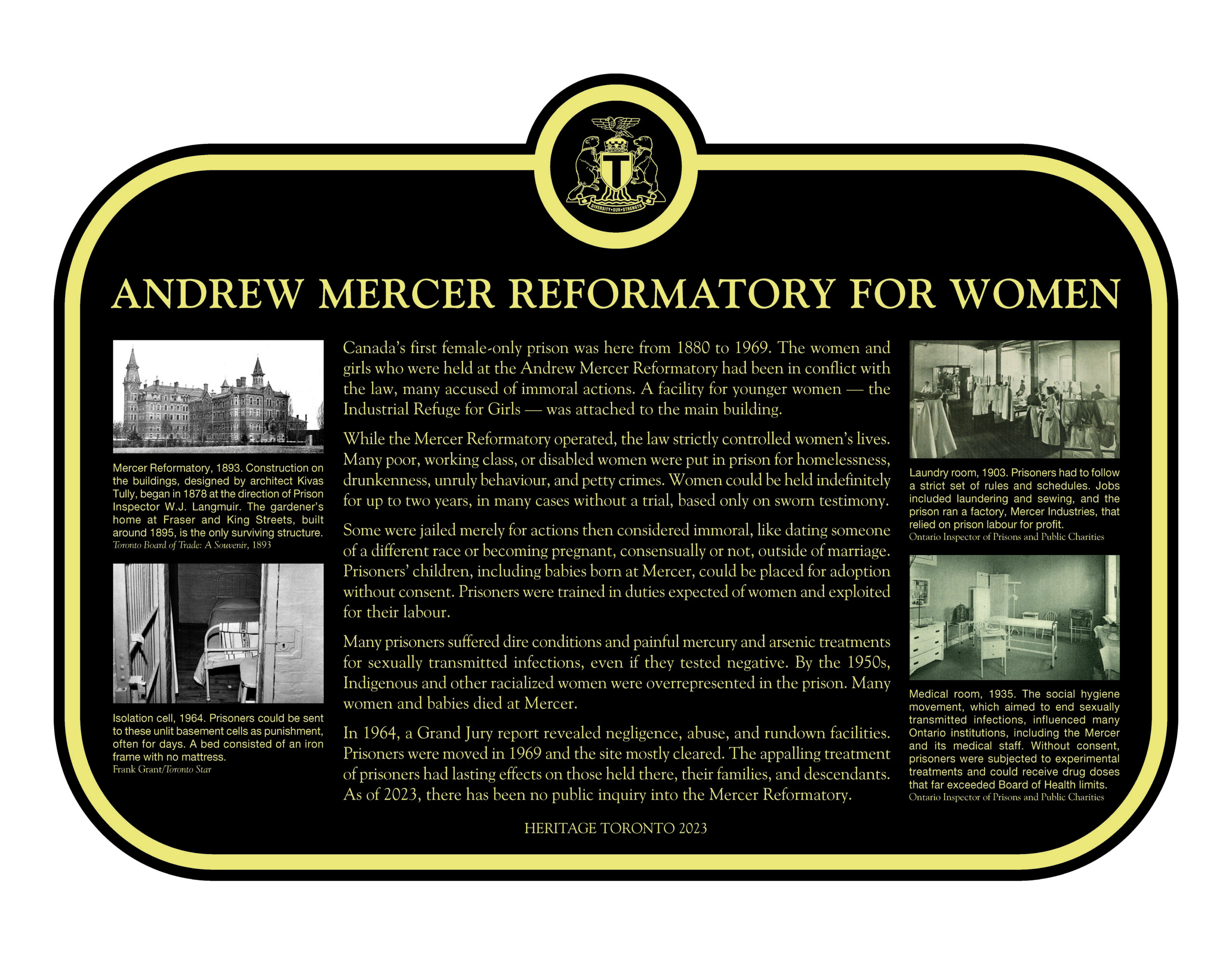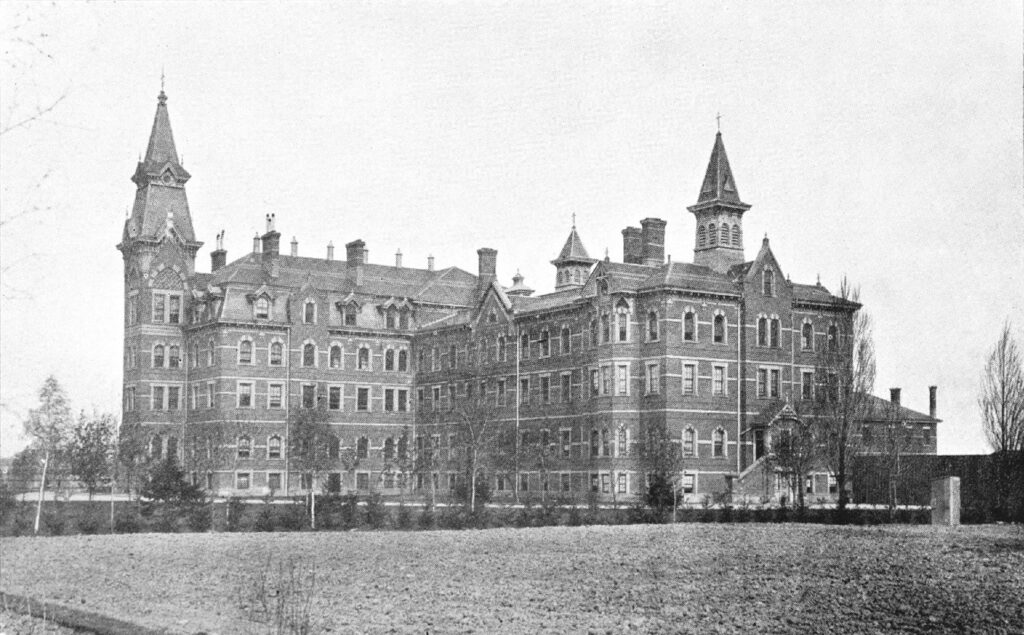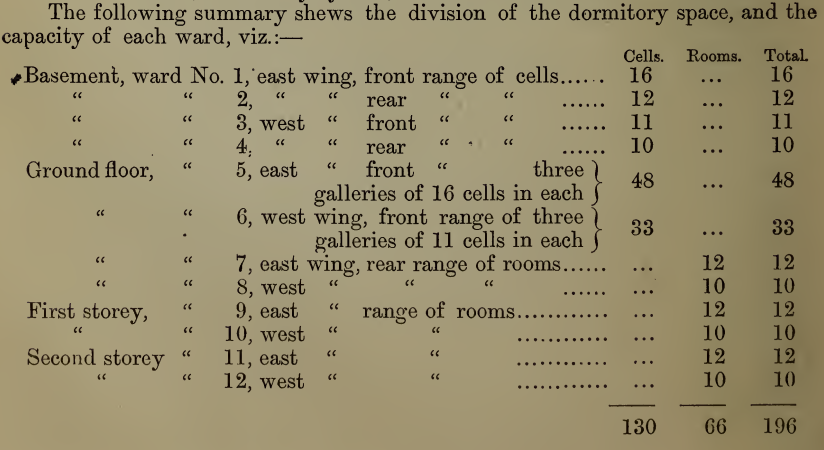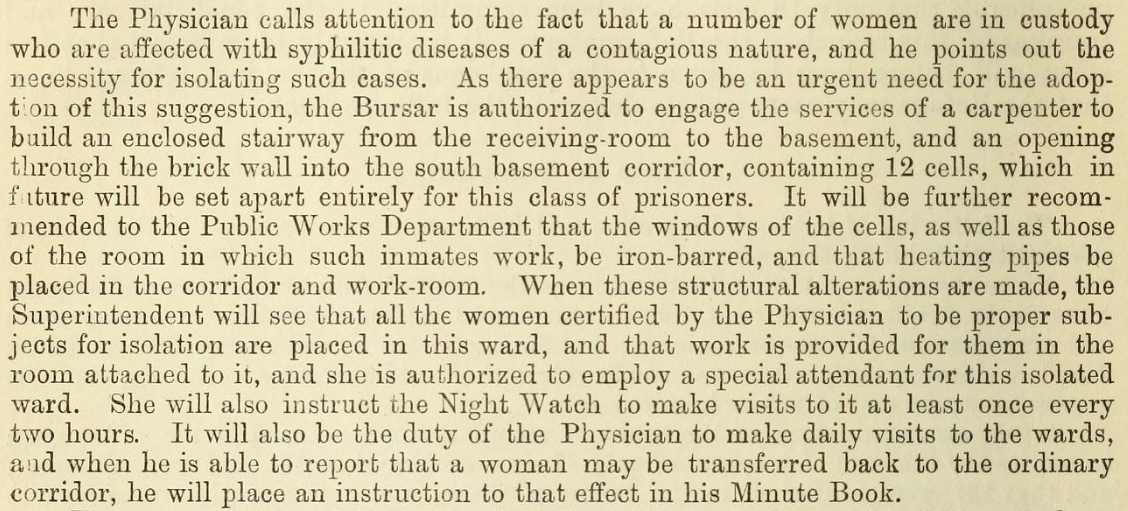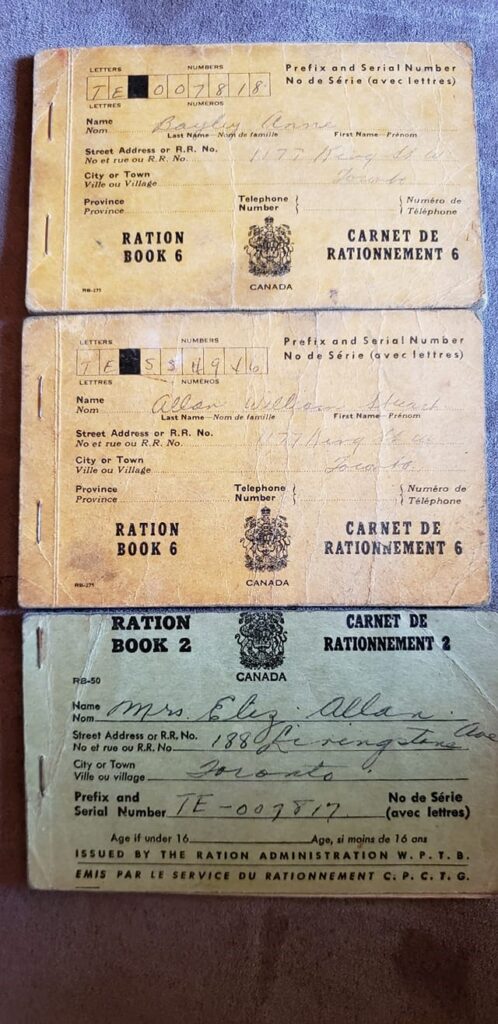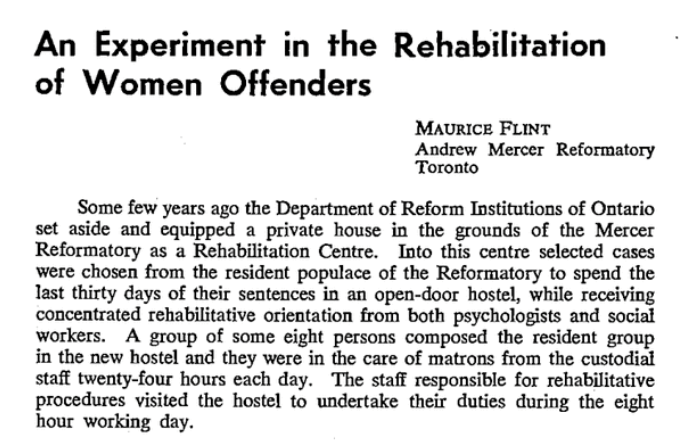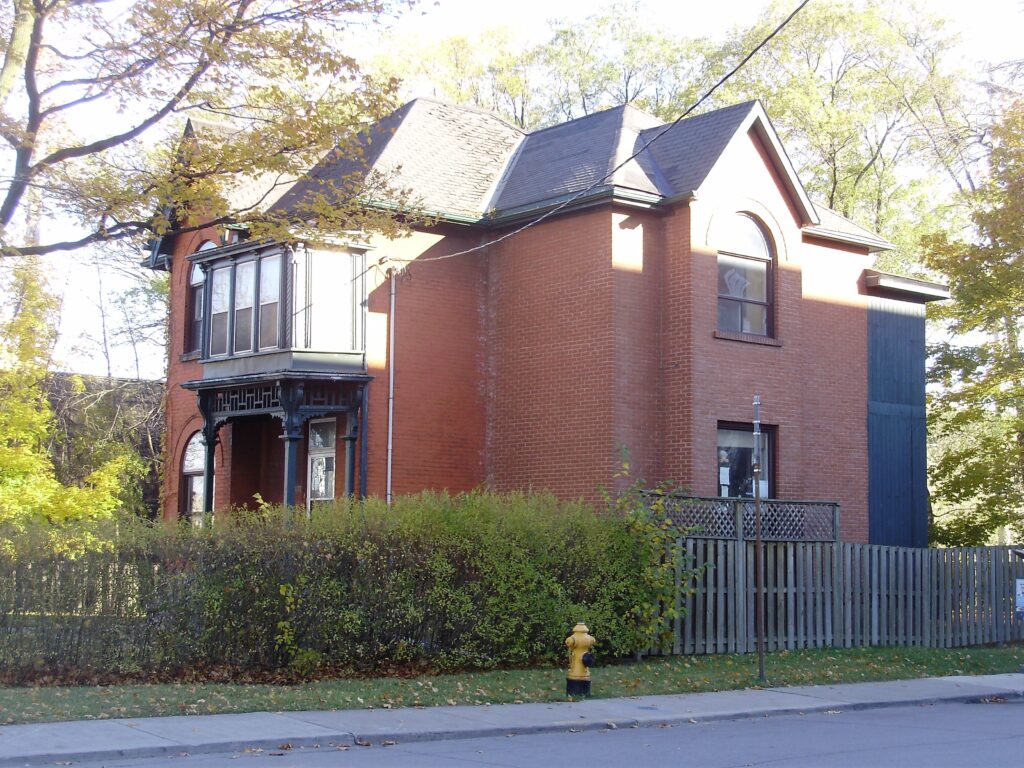Canada’s first female-only prison was here from 1880 to 1969. The women and girls who were held at the Andrew Mercer Reformatory had been in conflict with the law, many accused of immoral actions. A facility for younger women – the Industrial Refuge for Girls – was attached to the main building.
While the Mercer Reformatory operated, the law strictly controlled women’s lives. Many poor, working class, or disabled women were put in prison for homelessness, drunkenness, unruly behaviour, and petty crimes. Women could be held indefinitely for up to two years, in many cases without a trial, based only on sworn testimony.
Some were jailed merely for actions then considered immoral, like dating someone of a different race or becoming pregnant, consensually or not, outside of marriage. Prisoners’ children, including babies born at Mercer, could be placed for adoption without consent. Prisoners were trained in duties expected of women and exploited for their labour.
Many prisoners suffered dire conditions and painful mercury and arsenic treatments for sexually transmitted infections, even if they tested negative. By the 1950s, Indigenous and other racialized women were overrepresented in the prison. Many women and babies died at Mercer.
In 1964, a Grand Jury report revealed negligence, abuse, and rundown facilities. Prisoners were moved in 1969 and the site mostly cleared. The appalling treatment of prisoners had lasting effects on those held there, their families, and descendants. As of 2023, there has been no public inquiry into the Mercer Reformatory.
In 2019, Dr. Alanna McKnight stumbled upon an old Victorian building at the corner of Fraser Ave. and King St. W. Toronto, Ont. After investigating, she discovered that the house was located on the grounds of the notorious Andrew Mercer Reformatory—now the site of the Lamport Stadium located in Liberty Village. Considering the national significance of the historical reformatory, Dr. McKnight initiated an application for a plaque with Heritage Toronto. In the fall of 2019, the board at Heritage Toronto accepted the submission and began securing funding. In December, 2021, a motion initiated by former Toronto City Councillor Joe Cressy was successfully passed and funding to create the plaque was approved.
Securing Funds to Build the Reformatory
A photo taken of the Andrew Mercer Reformatory for The Toronto Board of Trade: “A Souvenir,” that also provided a short excerpt on how the funds were secured to build one of the largest public institutions in Toronto. Under the heading of the Death of Chief Justice Moss the following was printed:
“AN interesting event during this year, was the judgment given by the Supreme Court of Canada affirming the contention that a Provincial Government has no right to escheat to the Crown. The famous case upon which this turned was the ownership of the Andrew Mercer property, valued at $150,000. The owner had died intestate and the Ontario Government, ignoring the claims of certain parties, escheated the property to the Crown and appropriated a portion of the personality to founding what is known as the Mercer Reformatory for Women and now constituting one of the largest public institutions in Toronto.
The claimants went to law and the case proceeded from Court to Court until the Supreme Court gave a judgment in their favor. The Government, however, appealed against the decision to the Imperial Privy Council and there won the case finally. And Toronto benefitted through the consequent completion of a large building and the maintenance of a most useful institution.”
(pgs. 77 & 79)
Description of the Andrew Mercer Reformatory Building
J. W. Langmuir the Inspector of Asylums, Prisons, and Public Charities provided in his report (year ending September 30, 1878) an extensive description of the Andrew Mercer Reformatory building. To read the full description of the building as described by Langmuir it begins at the bottom of page 189 by clicking here.
Langmuir continues in his report the following year by describing the wards, classification system, workshops, employment, discipline, the Industrial Refuge for Girls, and much more. To read a section of this 1879 annual report click here.
By 1881 structural changes to the building were made for the purpose of another isolation ward in the south basement corridor, containing 12 cells. A separate work-room was also created to ensure the hard labour portion of a sentence was adhered to. Other alterations to the building would occur over the years until prisoners were removed from Mercer at closure in 1969.
List of Gardeners for the Andrew Mercer Reformatory
In 1894, the Victorian style brick house was “…erected on the grounds as a residence for the gardener” (Ontario Sessional Papers, 1895, No. 11, p. 74) and given the address of 1177 King St. W. However, the gardener’s house doesn’t seem to appear in Goad’s Atlas of the City of Toronto until 1913. The gardener’s house is the only surviving known structure associated with Mercer.
List of Gardeners by name:
1886 – “Arthur Ewing was appointed as gardener, June 1st, 1886” (Mercer Annual Report, 1887)
1891 – John F Barron is now listed as the gardener for Mercer (Toronto City Directory)
1894 – “A brick house has been erected on the grounds as a residence for the gardener” which was designated with the street address of 1177 King St. W. (Mercer Annual Report, 1895)
Mercer Annual Report, 1906
Other Gardener’s residing at 1177 King St. W., Toronto
1906 – Charles Macklin is now listed as the new gardener for Mercer (Toronto City Directory)
1944 – “It is with regret that I mention the retirement, because of ill health, of our gardener. Mr. Macklin, who for 39 years was a most valued
and conscientious member of the staff.” (Mercer Annual Report, 1945)
1945 – John S. Allan, & John C. Bayley (Toronto City Directory)
1952 – John S. Allan & Anne Bayley (Toronto City Directory)
Credit: Rhonda Allan-Moretti granddaughter of John Stuart Allan, gardener at Mercer
An Experiment in the Rehabilitation of Women Offenders by Maurice Flint, 1960, click image above to read more
The old gardener’s house for the Mercer Reformatory is still located at the intersection of King Street West and Fraser Avenue, Toronto, Ontario
